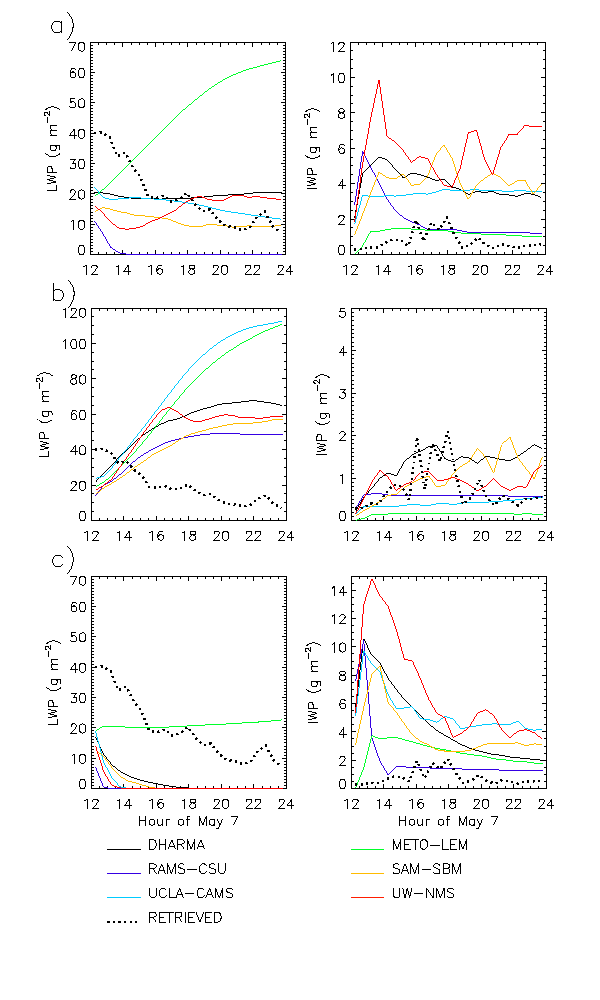Intercomparison of Model Simulations of Arctic Mixed-Phase Clouds
Submitter:
Morrison, Hugh Clifton — University Corporation for Atmospheric Research
Area of research:
Cloud Distributions/Characterizations
Journal Reference:
Science
This study compared simulations of a persistent mixed-phase boundary layer cloud using six cloud-resolving and large-eddy simulation models. The case is based on observations gathered on May 7, 1998, during the Surface Heat Budget of Arctic Ocean (SHEBA) and First ISCCP Regional Experiment - Arctic Cloud Experiment (FIRE-ACE). Low-level mixed-phase clouds, which contain both supercooled liquid droplets and ice crystals, occur frequently in the Arctic and have a critical impact on surface radiative fluxes and hence climate, yet are poorly simulated by current weather and climate models. This study built upon the previous ARM-supported model intercomparison project that was based on a case of mixed-phase boundary layer clouds observed during the Mixed-Phase Arctic Cloud Experiment (M-PACE). The M-PACE intercomparison found a large spread of results among simulations in key quantities, such as liquid and ice water paths. The goal of the SHEBA intercomparison was to further explore these differences and relationships between microphysics, radiation, and dynamics among the models. The SHEBA case was ideally suited for study given its simplicity. Here, ice nucleation was constrained in the simulations in a way that holds the ice crystal concentration approximately fixed, with two sets of sensitivity runs in addition to the baseline simulations utilizing different specified ice nucleus (IN) concentrations.
Impact
All of the baseline and sensitivity simulations grouped into two distinct quasi-steady states associated with either persistent mixed-phase clouds or all-ice clouds after the first few hours of integration (Figure 1), implying the existence of multiple states for this case. These two states are associated with distinctly different microphysical, thermodynamic, and radiative characteristics. Most but not all of the models produced a persistent mixed-phase cloud qualitatively similar to observations using the baseline IN/crystal concentration, while small increases in the IN/crystal concentration generally led to rapid glaciation and conversion to the all-ice state. Budget analysis indicated that larger ice deposition rates associated with increased IN/crystal concentrations had a limited direct impact on dissipation of liquid in these simulations. However, the impact of increased ice deposition was greatly enhanced by several interaction pathways that led to an increased surface precipitation flux, weaker cloud top radiative cooling and cloud dynamics, and reduced vertical mixing, promoting rapid glaciation of the mixed-phase cloud for deposition rates in the cloud layer greater than about 1-2 x 10-5 g kg-1 s-1 for this case.
Summary
These results indicate the critical importance of precipitation-radiative-dynamical interactions in simulating cloud phase, which have been neglected in previous fixed-dynamical parcel studies of the cloud phase parameter space. Large sensitivity to the IN/crystal concentration also suggests the need for improved understanding of ice nucleation and its parameterization in models.


